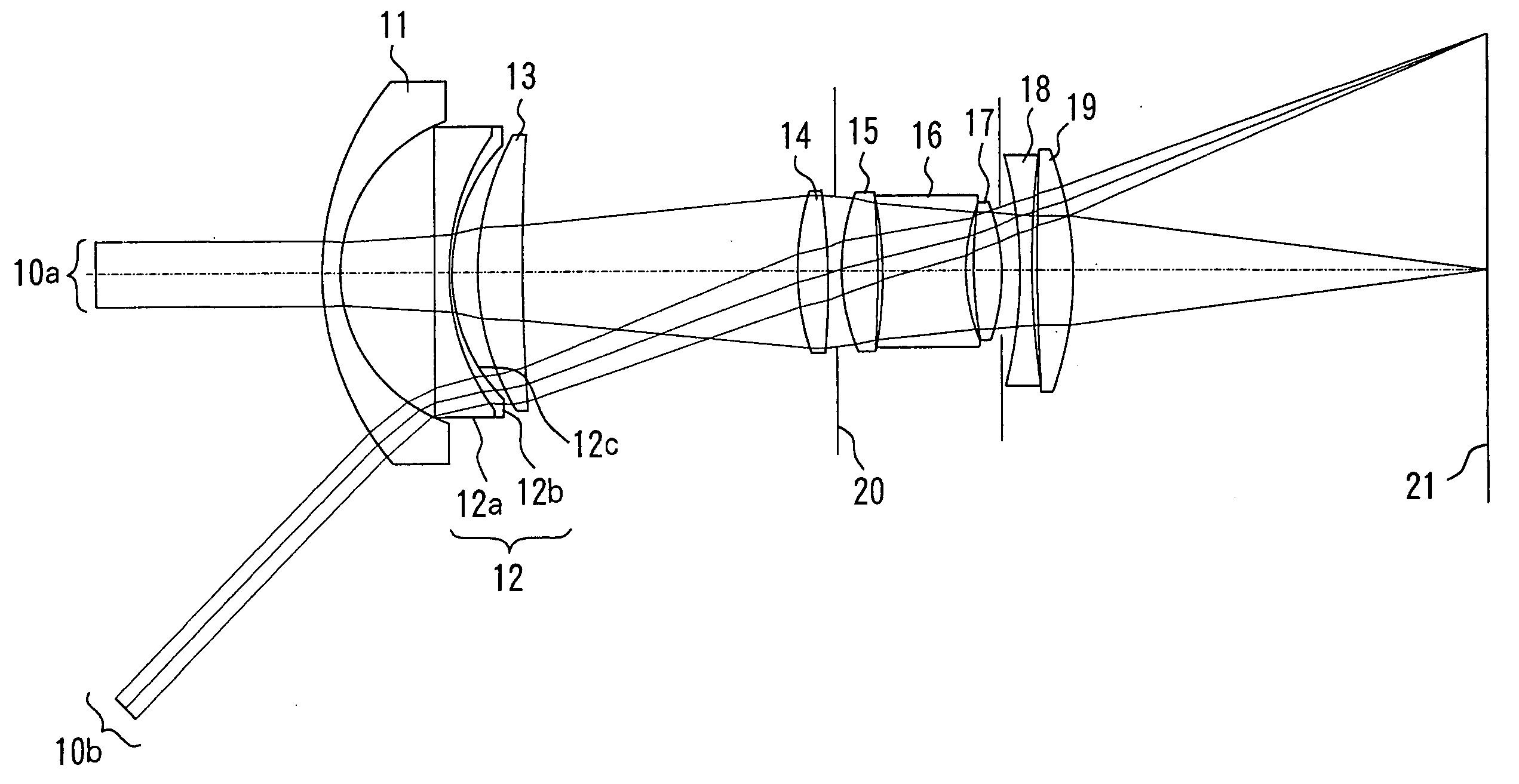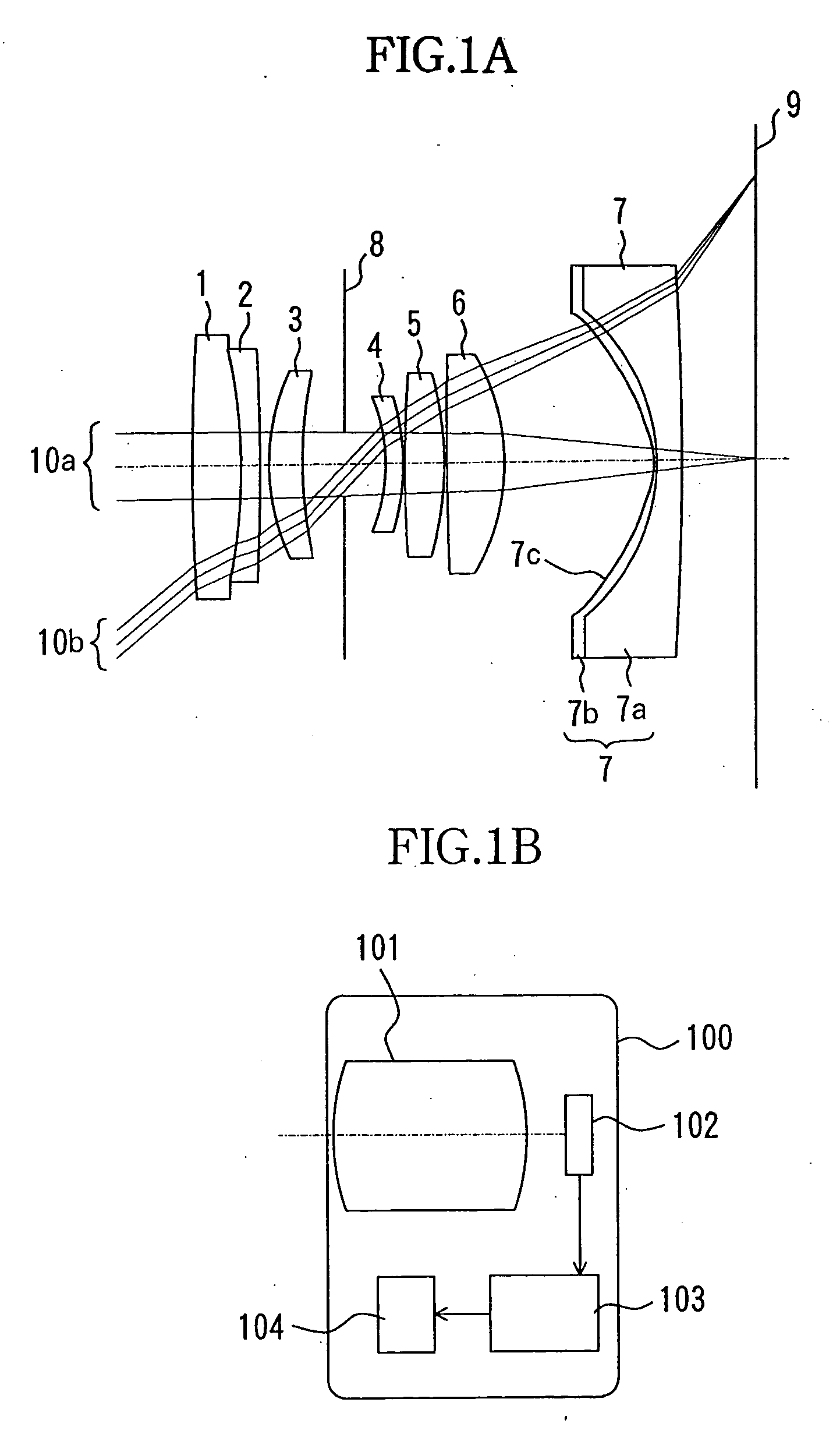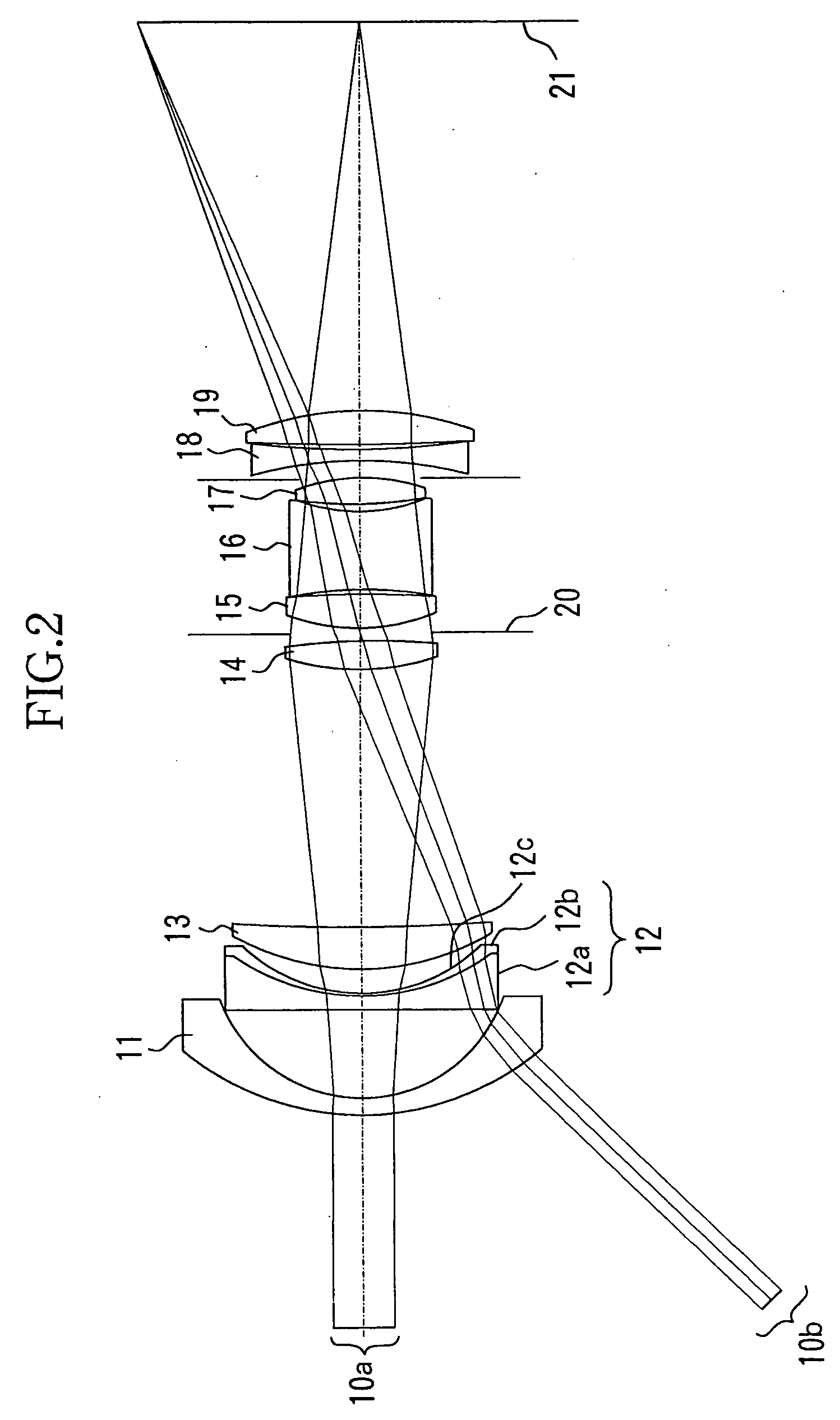Optical element having minute periodic structure
a technology of periodic structure and optical element, which is applied in the direction of mountings, coatings, instruments, etc., can solve the problems of large stress at the interface between the glass and the resin layer, the cost of aspheric lenses manufactured through glass grinding, and the limited types of glass materials that can be used, etc., to achieve stable and favorable reflection suppressing
- Summary
- Abstract
- Description
- Claims
- Application Information
AI Technical Summary
Benefits of technology
Problems solved by technology
Method used
Image
Examples
embodiment 1
(Embodiment 1)
FIG. 1A shows an image-taking optical system which is Embodiment 1 of the present invention. FIG. 1B shows the structure of an image-taking apparatus such as a digital camera and a video camera which uses the image-taking optical system.
In FIG. 1B, reference numeral 100 shows a body of the image-taking apparatus, and 101 the image-taking optical system. Reference numeral 102 shows an image-pickup element formed of a CCD sensor, a CMOS sensor or the like disposed on an image plane of the image-taking optical system 101. The image-pickup element 102 photoelectrically converts a subject image formed by the image-taking optical system 101. An output signal from the image-pickup element 102 is amplified and A / D converted by an image processing circuit 103 before predetermined processing thereby. In this manner, an image signal is produced. The image signal is recorded on a recording medium 104 such as a semiconductor memory, an optical disc, and a magnetic tape.
In FIG. ...
embodiment 2
(Embodiment 2)
FIG. 2 shows an image-taking optical system which is Embodiment 2 of the present invention. The image-taking optical system is also used in the image-taking apparatus shown in FIG. 1B. In FIG. 2, reference numerals 11 to 19 show lenses constituting the image-taking optical system, 20 a stop, and 21 an image plane.
Reference numeral 10a shows a luminous flux (a central luminous flux) which is formed into an image at the center of the image plane 21, while reference numeral 10b shows a luminous flux (a peripheral luminous flux) which is formed into an image in a peripheral portion.
Of the lenses 11 to 19, the lens 12 is an aspheric lens having an aspherical surface on the image forming side. The lens 12 is a replica aspherical surface formed of a glass lens (a base member) 12a which has spherical surfaces on both sides and a relatively thin resin layer 12b which is formed with the replica method on the spherical surface on the image plane side of the glass lens 12a and...
embodiment 3
(Embodiment 3)
FIG. 8 shows an image-taking optical system which is Embodiment 3 of the present invention. The image-taking optical system is also used in the image-taking apparatus shown in FIG. 1B. In FIG. 8, reference numerals 31 to 39 show lenses constituting the image-taking optical system, 40 a stop, and 41 an image plane.
Reference numeral 10a shows a luminous flux (a central luminous flux) which is formed into an image at the center of the image plane 41, while reference numeral 10b shows a luminous flux (a peripheral luminous flux) which is formed into an image in a peripheral portion.
Of the lenses 31 to 39, the lens 32 is an aspheric lens having an aspherical surface on the image plane side. The lens32 is a so-called replica aspherical surface formed of a glass lens (a base member) 32a which has spherical surfaces on both sides and a relatively thin resin layer 32b which is formed with the replica method on the spherical surface on the image plane side of the glass lens ...
PUM
| Property | Measurement | Unit |
|---|---|---|
| Angle | aaaaa | aaaaa |
| Nanoscale particle size | aaaaa | aaaaa |
| Structure | aaaaa | aaaaa |
Abstract
Description
Claims
Application Information
 Login to View More
Login to View More - R&D
- Intellectual Property
- Life Sciences
- Materials
- Tech Scout
- Unparalleled Data Quality
- Higher Quality Content
- 60% Fewer Hallucinations
Browse by: Latest US Patents, China's latest patents, Technical Efficacy Thesaurus, Application Domain, Technology Topic, Popular Technical Reports.
© 2025 PatSnap. All rights reserved.Legal|Privacy policy|Modern Slavery Act Transparency Statement|Sitemap|About US| Contact US: help@patsnap.com



